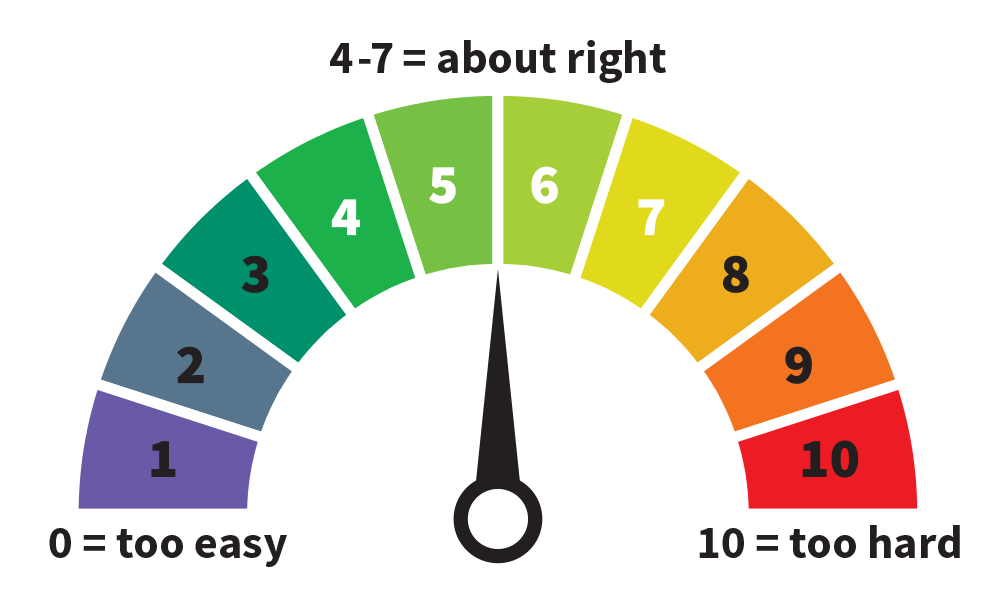Using an effort scale for pacing
An effort scale is a good way to check whether an activity you are planning to do is likely to be too much effort (leading to overactive pacing), too little effort (underactive pacing), or just right.

TIP: draw your own Effort Scale on a piece of paper.
Highlight segments 4 – 7 to remind youself that this is the range you’re aiming for.
How to use an effort scale
Decide the effort level of the activity you are planning to do.
Aim for an effort level of between 4-7 on the scale.
It might mean altering your plans to do a little more or a little less to make certain the balance is right for you.
A low effort level means that things may not get done, or they will take ages, and you may get frustrated due to lack of progress. Too much effort and you may crash out with a setback again.
It’s rather like checking a temperature in an oven. Too little heat, the dish is undercooked; too much heat, and the dish burns. An effort scale guides the balance of your activity to prevent a pacing disaster.
Rate the effort level of an activity on this scale:
If the effort it takes is 3 or less on the scale, experiment further – try spending more time on the activity and/or doing it faster.
If it’s 8 or more, reduce it with more breaks and/or doing it for a shorter time.
If your score is between 4 and 7, this is the balanced level of effort and you’re most likely to succeed.